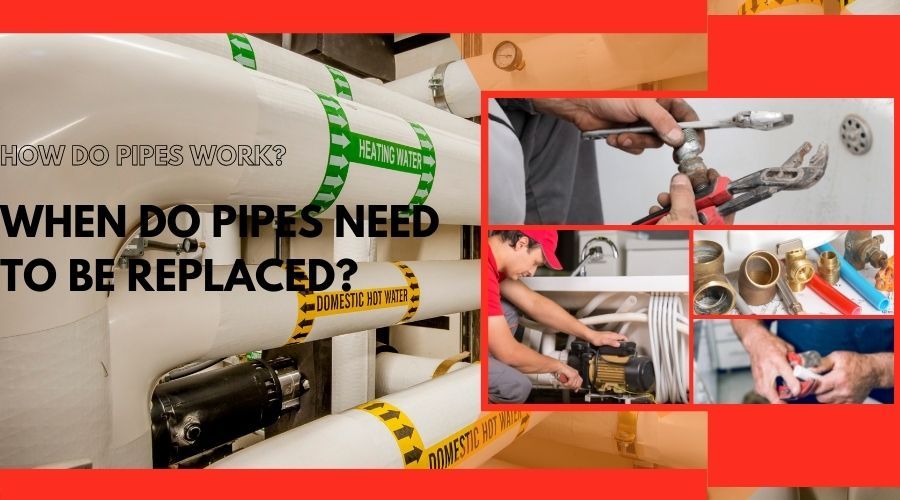
It's time you found out how plumbing works! In this blog post, we'll take a look at the anatomy of a plumbing system and discuss when pipes need to be replaced. We'll also cover some common myths about plumbing, and shed some light on the science behind it all. So if you're ever curious about how plumbing works, or simply want to know more about why your pipes suddenly seem to be clogged up, read on!
If you're curious about the anatomy of a plumbing system, this is the blog for you! By understanding how pipes work, you'll be able to keep your home healthy and functioning properly. Pipes have been in use for water, sewage, gas, and oil since the 1800s, and their history dates back to ancient civilizations. Today, plumbing systems are made up of different parts - valves, fittings, manifolds, and more - that work together to deliver water or gas safely and efficiently. Without a functional plumbing system, your home would be flooded and your gas would be leaking. So, it's really important to understand the basics of plumbing if you want to keep your home running smoothly!
Plumbing is essential in every home, and it's important to know how pipes work. Pipes are made of metal, plastic, rubber, or vinyl and each has its own advantages and disadvantages. Metal pipes are the most common type and are strong and durable. Rubber or vinyl pipes are less expensive than metal or PVC, but they don't last as long. When it comes to plumbing-systems, copper is the best option because it's corrosive-resistant and lasts the longest without repairs. PVC(polyvinyl chloride) is a unique type of plastic pipe that is flexible and can be used in cold climates. So, the next time you have a question about how a pipe works or need to replace one, don't hesitate to consult an expert!

When it comes to plumbing, it's important to know the basics. That's where this blog comes in! In this post, we'll be discussing when pipes in a plumbing system need to be replaced. We'll also be discussing the different factors that can affect their lifespan, and how to take care of them to ensure a long-lasting system. So, whether you're a first time homeowner or an experienced one, keep reading for some valuable information on how pipes work!
An elbow is a type of valve that helps to redirect and slow down this fast stream so that it can reach your sink safely. When you turn on the faucet, the water pressure pushes water through the pipes until it reaches your sink. However, if the pipe is going in an unexpected direction (like if you're using an elbow on a bathroom sink), the water pressure can't push all of the water through the pipe at once. The valve allows some water to flow through slowly, reducing the chances of flooding your bathroom or kitchen.
Pipes and their fittings are made of different materials, depending on their purpose - from plastic to metal. Properly installing and repairing pipelines is important for ensuring that they function properly without leaking or causing damage. The pressure in the pipe causes water to flow in a downward direction and at a slower rate. Water flows through pipes by using the Bernoulli principle.
Parts of a plumbing system include the water meter, main pipe (usually copper), stopcock (normally brass), drainpipe (plastic or PVC), waste pipe (copper, steel, galvanized iron), overflow pipe/sump pump, and vent pipes. Water meters are inserted into the ground near your home's water source. They track how much water is used and sends this information to the municipal supply piping system. Municipal supply piping systems run beneath streets and roads and deliver clean water to your home. Private supply piping is inside homeowners' property and runs from the water meter to the home's fixtures. Pipes are made of metal, plastic, or PVC and run through the walls and ceilings of your home. When you turn on the tap in your kitchen sink, cold water flows from the water meter to the main pipeline where it is heated up by your refrigerator before making its way to your faucet.
Metal pipes are sturdy and can resist corrosion better than plastic pipes. They also have a higher water flow rate, which is why they're used in locations where water pressure is high. Plastic pipes are cheaper to produce and often don't corrode as quickly as metal ones.
As a pipefitter, you will need to be aware of the different types of piping used in plumbing systems and how to install, repair, and maintain them safely. Additionally, pipefitters are responsible for regulating flows by turning valves. Consequently, this position requires skill and expertise in a variety of disciplines.
Thanks to this blog, you will have a better understanding of how plumbing systems work and when they need to be replaced. So, what are you waiting for? Start fixing your own plumbing issues today!